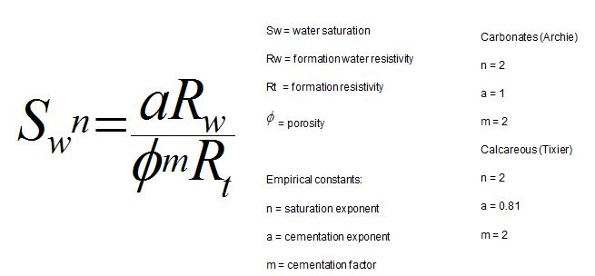Water saturation in a formation can be calculated by using the correct variables inserted into Archie’s equation. It is understandable how the typical way has grown to simply estimate water saturation using an offset well to determine that particular formations wetness, but by using this formula on your particular application you are able to verify this formation wetness for your specific well. The variables required to use Archie’s Equation can be found using open hole logging tools such as Density and Neutron Porosity, Resistivity in conjunction with the known formation water Resistivity for that formation, which is tabulated in Rw Catalogs available with CWLS.
The porosity variable is found using two methods depending if you in gas or oil-bearing zone.
For an oil bearing zone:
For a gas bearing zone:
Why would we want to know the true amount of water saturation in your particular formation?
When determining the type of porosity in a given formation we know this porosity can be made up of two things, water or hydrocarbons. With finding out the amount that is water we then can determine the ratio of water to hydrocarbon saturation which is as simple as 1-Sw.
Some typical cut-offs for economically producible hydrocarbons depends on a number of factors including, but not limited to bed thickness, permeability, reserve capacity, depletion rates, market price of hydrocarbons at that time, production costs and of course local history.
General rule of thumb as the possible cut-offs depend on the regional characteristics. After a calculation is complete the following can be used as a rough guideline as to if that formation is considered “wet”, simply too much water, or having the capability to be your next pot of gold.





